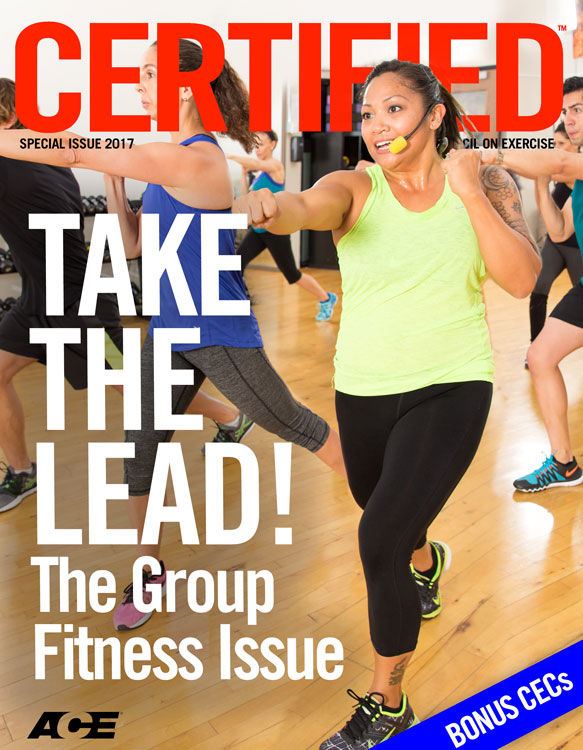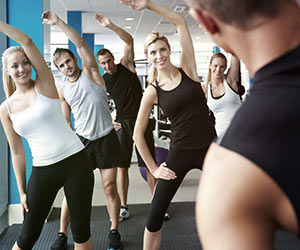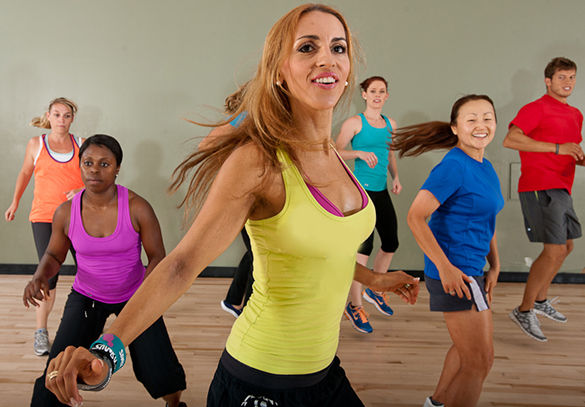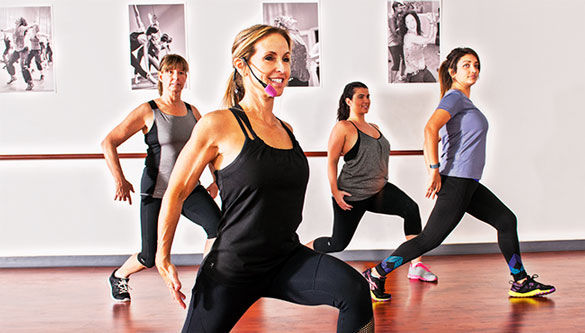
The truth is not all group fitness classes are created equal. Irrespective of the specific format, there are certain qualities that separate a good workout from a compelling movement experience. While every instructor is unique in his or her own right, the ones who have successfully established and increasingly grown their class sizes seem to apply the same essential ingredients that together create the “secret sauce” that keeps participants coming back for more (and telling their friends). To explore what lies at the heart of these memorable and meaningful class experiences, six of the industry’s most seasoned and respected group fitness instructors share the practical strategies and guiding principles they have employed to both grow and retain such faithful followings.
Connect With People on a Human Level
A focus on body, mind and spirit is not something that should be solely reserved for leading classes like yoga, tai chi or Pilates. No matter what modality you’re teaching, movements you’re including or equipment you’re using, one thing is always certain—you are teaching human beings who are inherently holistic creatures. As such, the experiences we create as instructors must connect with and inspire participants not only physically, but also mentally, emotionally and spiritually to positively impact their health and well-being.
The key to connecting with participants on a deeper level is to always come from a place of empathy, says Violet Zaki, Equinox group fitness instructor and black belt. “I embrace the idea that we are all in this together and I try to connect with each of my students on an emotional level,” says Zaki. “Having some common experiences or understanding of my students’ backgrounds is always helpful to me.”
Aiming to understand the feelings, experiences and perspectives of participants, and using that as a guide to compassionately meet individuals where they are, without judgement, ensures that everyone feels safe, supported and truly valued. To begin this rapport-building process, it’s imperative that as instructors we take time to greet and thoughtfully check-in with both new and returning participants alike to see how they are feeling and what they are experiencing on that particular day, and in that particular moment.
“When I was teaching regularly, it was important for me to engage the participants before and after class to answer questions, check in on their progress, and get a feel for what their day was like and if they were experiencing any physical issues,” shares Lisa Wheeler, vice president of fitness at Daily Burn and owner of Wheels in Motion Productions. “It just takes a moment to really connect and care, and that makes all the difference.”
For many students, the group fitness space may serve as the supportive sanctuary they need to process events that are transpiring in other areas of their lives.
“My objective is to make the experience the best hour of their day, as you never know the full extent of what people are experiencing in their lives,” says Keli Roberts, ACE Gold Certified Group Fitness Instructor and international fitness educator. “Being kind, compassionate and genuinely interested in people’s lives and their needs goes a long way.”
Zaki adds that although we, too, as instructors have our own personal stresses and issues that we face, the focus of each class must be on the students and ensuring a positive, welcoming culture where individuals can immerse themselves in the experience, especially in the midst the challenges they may face.
“When I find myself stressed, I think about who in my classes needs me to give them the emotional, physical and mental strength to cope, and an hour to take their mind off their worries,” shares Zaki. “Remembering that it is not about me allows me to most effectively empower and lift those I serve.”
Get Them Hooked on a Feeling
It goes without saying that the movements and exercises included in class are extremely important and, as such, should always be thoughtfully and intelligently selected and sequenced based on sound science and programming principles, as well as delivered clearly and concisely to ensure safety and effectiveness. However, what should not be overlooked in the exercise experience is how participants feel while participating in the class and upon leaving the group fitness space.
“A very simple solution to the complex problem of how to keep participants returning to class time and time again is to make people feel good,” says Irene Lewis-McCormick, M.S., master trainer, author and veteran group fitness leader. “It truly is about how people should feel when they come to your class, not only when they show up, but also when they leave. As instructors, we must help class participants feel connected, embraced, encouraged and respected for what they can do.”
Through these positive experiences with exercise, participants develop a favorable attitude toward movement, a critical link in the adoption of, and adherence to, a regular routine of physical activity and, as a result, improvements in health and well-being. It’s our role as instructors to design and deliver classes that ensure the success and enjoyment of every student, regardless of their current fitness level. Each small “win” they experience helps to enhance their belief in themselves and their own capabilities.
Roberts stresses that every class taught should be 100 percent inclusive, which can be accomplished by providing progression and regression options for the movements and exercises included in the class experience. In addition to increasing participant’s self-efficacy, providing multilevel movement experiences in which every participant feels successful is a surefire way to grow your classes, as word of mouth is still one of the most powerful ways in which to build your following, notes Roberts. “When people have a great experience they tell other people, who in turn tell others. Conversely, it works the same when people have a negative experience.”

Little Things Done Consistently Make a Big Difference
When it comes to creating inclusive, compelling, community-oriented class experiences, it is a culmination of the little things you do consistently as an instructor that make a meaningful difference in the lives of your participants. The following list highlights a few practical tips cited by the veteran instructors included in this article:
- Learn and use participants’ names.
- Make yourself accessible to students before, during and after class.
- Be fully present when engaging with your participants.
- Ask regularly for feedback.
- Vary your classes and your music.
- Utilize uplifting, empowering language.
- Continue your own learning and professional development.
Embrace Your Authentic Style
Although we may all share the same job title of group fitness instructor, we each possess a unique approach to teaching that is directly influenced by our own personal experiences, values, and perspectives. As such, it’s essential that every class you teach be a reflection of your authentic self and the innate qualities that make you uniquely you, says Zaki. “As an instructor it’s important to find your voice. As a personal branding coach, I often find people trying to copy others, which in the end does not work.”
Acknowledging your unique personality traits and allowing them to shine through in your approach to teaching is one important and compelling reason why participants will choose to attend your classes over others of a similar nature.
Lawrence Biscontini, award-winning mindful movement specialist and author of Cream Rises, shares that ultimately being, not just having, a unique selling point in the industry is what attracts a strong following. “I have been able to grow and retain a following by having a message that people can relate to, as well as a style that is consistent and creates an experience for all five of the senses,” explains Biscontini.
Outlining Your Core Values as an Instructor
To establish a solid foundation for your work as a group fitness instructor, it’s important to define your personal brand.
“Think of yourself as a business within a business” says Zaki, who is a personal branding coach. “Self-awareness is key to understanding what type of teacher you want to become.”
Zaki recommends that as an instructor you not only find a niche and become an expert in that area through ongoing study and professional development, but that you also identify your teaching style and always keep in mind why you wanted to become an instructor in the first place. Taking time to assess your core values as a teacher can be a helpful practice in gaining greater clarity about your personal brand and your authentic self.
Zaki embodies the following core values as an instructor, which have enabled her to reach more students and grow her classes, all while making a truly meaningful impact.
- Over-deliver every single time.
- Enhance the lives of others.
- Give it all I’ve got and be fearless.
- What I do is more important that who I am.
- Live with integrity.
- Be passionate and determined.
- Create a positive, lasting impact.
- Give back.
- Always root for the underdog.
Cultivate Community Inside and Outside the Class Environment
The feeling of being a part of something bigger and the camaraderie that is forged in group fitness classes isn’t quite as easily replicated through most other forms of physical activity. As such, we have the unique ability to harness the power of the group to cultivate a true sense of community that leads to more compelling class experiences and ultimately to recruiting and retaining more participants. With the continued evolution of technology, the ability to build a tribe and foster meaningful connections now extends well beyond the designated class timeslot thanks in large part to the proliferation of social media.
“It is no longer only about the one hour instructors spend with students in the studio or gym,” says Wheeler. “As an instructor, you must reach individuals 24/7 to deepen your connection, and the focus should always be about them—not you.
Chris Freytag, veteran group fitness instructor and founder of Get Healthy U TV, has specifically used Facebook to not only connect with participants but also with other instructors in her community.
“A few of us early-morning instructors together formed an ‘early morning workout peeps’ group on Facebook, where we post information about upcoming classes, such as what equipment we’re using, class themes, scheduling and subs, etc.,” says Freytag. “The members in the group discuss workouts, chat with one another and ask questions to the instructors, which really creates a nice community atmosphere. I firmly believe in ‘group power,’ as group fitness helps keep people accountable, provides a solid workout and enables individuals to make new friends along the way.”
Biscontini has also taken to social media to further his connection with his fans and students, using themes such as “Discovery of the Week” and “Tuesday Tips” across platforms like Instagram and Facebook in addition to his YouTube show, The Good Grapevine, to share valuable information and to engage with individuals across different mediums. “Growing my following comes from striving to grow my own business in both the categories of being popular and professional simultaneously, without ever sacrificing one for the other,” shares Biscontini.
If you are choosing to expand your reach into cyberspace, it’s important to always keep participant confidentiality front of mind, which includes refraining from sharing photos or personal stories of participants without expressed written consent to do so. Additionally, in the spirit of authenticity, Zaki stresses the importance of painting an accurate, appropriate and professional view of yourself in the digital world.
“There is no discrepancy between my real voice and how I represent myself on social media—I am always the same person, as people like authenticity,” says Zaki. “I personally stay away from being preachy and I choose to share rather than sell. What I put out there is a reflection of who I truly am as a teacher.”
Although technology provides additional touch points for reaching participants, don’t forget about the power of connecting with people in person. Lewis-McCormick suggests attending other classes not to take away participation from other classes or instructors, but rather to meet new people and to let them know what other options are available at the facility.
“When you allow members to meet you they will want to try out a class with you,” says Lewis-McCormick. “Be genuine and real and invite them personally to attend. The connection you create is very powerful and you will quickly win some people over, particularly if they don’t feel connected with their current class or instructor.”
At the end of the day, Roberts notes that growing a dedicated following for your group fitness classes boils down to your sincere desire to be of service and to make a meaningful difference in people’s lives. This means not only providing a memorable, purposeful and enjoyable movement experience, but also imparting meaningful words of wisdom that transcend the physical experience and spur a process of growth, change and personal discovery in participants that guide them toward a happier, healthier, and more fulfilling life.
“When people leave your energy circle after being with you, what do they take away with them that adds value to their lives, yet has nothing to do with the movement at all?” asks Biscontini. “Answer that question effectively as an instructor and you’ll have a waiting list.”
Get more tips, approaches and practical examples of how to create memorable movement experiences for clients and participants from other world-renowned group fitness instructors.





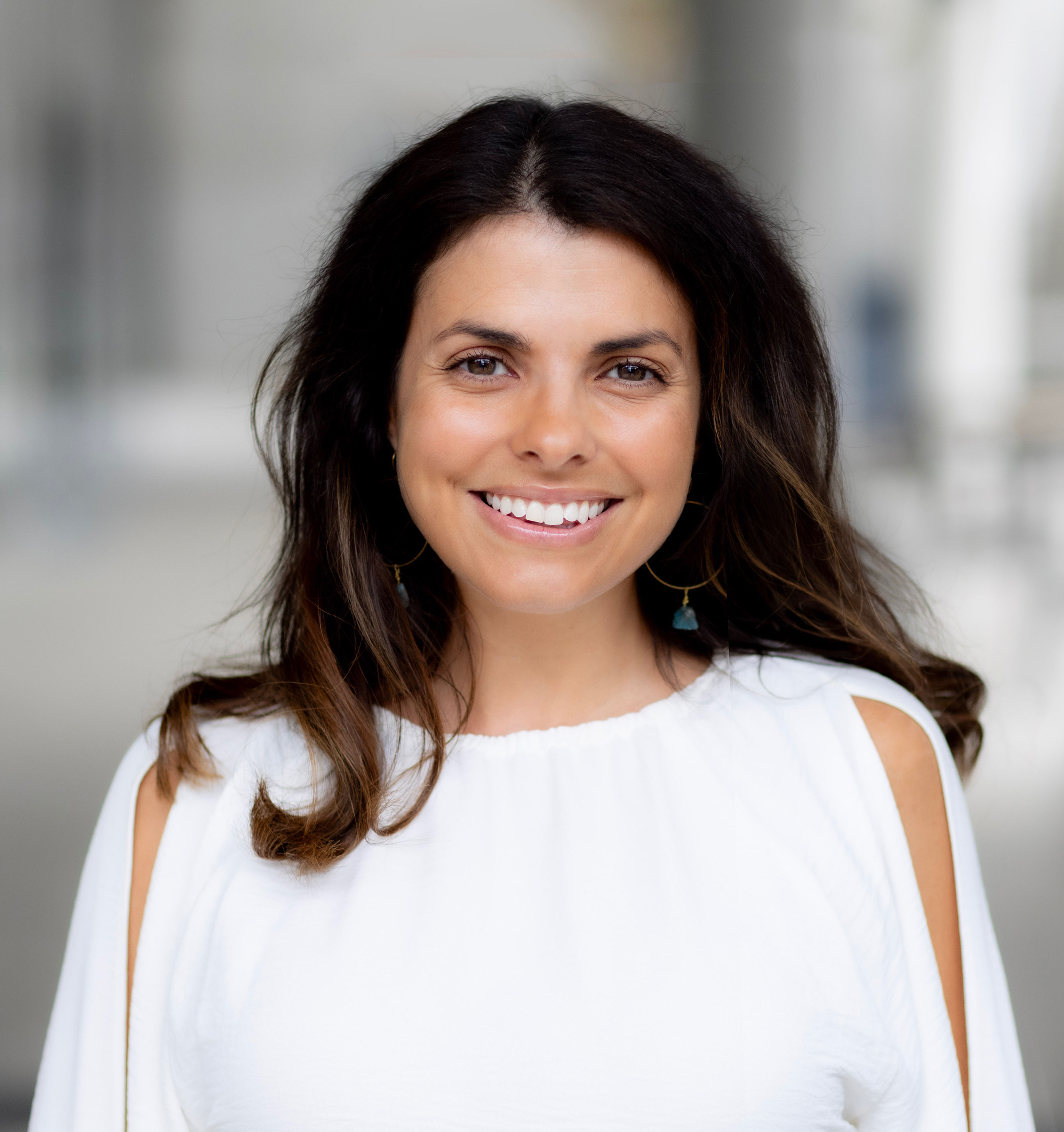 by
by 